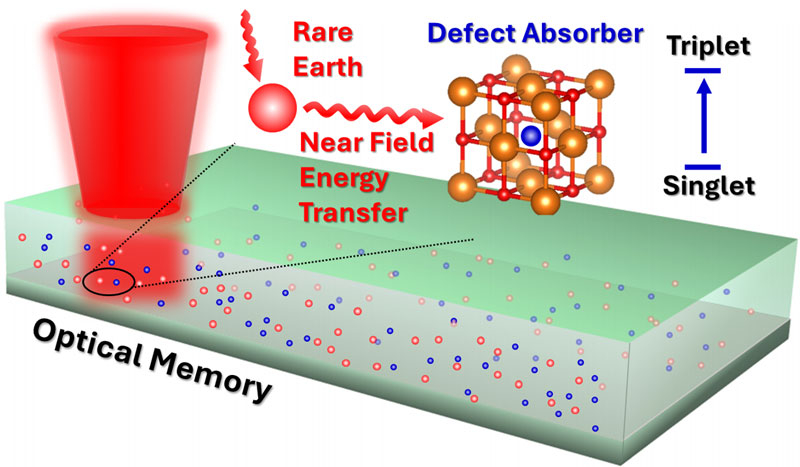A team of US scientists has been able to combine quantum mechanical theory and digital recording, paving the way for potentially ultra-dense optical memory. Recording is carried out by atomic-sized emitters built into the memory itself, and the cells for storing information are multiple defects in the atomic structure of the memory. All this involves a controlled change in the quantum states of defects, representing a mixture of classical and quantum physics.

Image source: Giulia Galli
The research and development of models of the phenomena under study was carried out by physicists from the Argonne National Laboratory of the US Department of Energy and the Pritzker School of Molecular Engineering at the University of Chicago. First, they carried out simulations and predicted possible results, and only then conducted experiments. The work done by scientists is innovative in many ways. No one has yet studied the question of how defects in the atomic structure of solid materials will behave if energy (photon) emitters are located next to them within nanometer reach. In fact, this is near-field physics, which is not easy to study, primarily due to the emergence of various kinds of quantum effects.
«”We have developed the fundamental physics of how energy transfer between defects can underlie an incredibly efficient optical storage method,” said Giulia Galli, a professor at the University of Chicago and a senior scientist at Argonne National Laboratory. “This study illustrates the importance of studying first principles and quantum mechanical theories to illuminate new, emerging technologies.”
If we consider, for example, optical disks, then the minimum allowable spot for recording will be limited by the diffraction limit of the optical system and cannot be less than the wavelength of the recording laser. Scientists have proposed saturating the material with atoms of rare earth elements, which are distinguished by the fact that they are capable of re-emitting light incident on them in a narrower range and at other wavelengths. In this way, it is possible to create a material with myriads of recording “lasers” inside, each of which would be the size of an atom.
In the same way, the material can be saturated with recording cells, which would be defects in the crystal structure. Given enough rare earth atoms and defects, most of them would be within nanometer distance of each other. The essence of the discovery is that rare-earth emitters (more precisely, re-emitters) irreversibly or for a very long time change the quantum states of nearby defects (transfer them from a singlet to a triplet state). And this is memory operating in the optical range. And very dense memory – at the level of atomic structure.
Scientists warn that they still have little understanding of many of the mechanisms of how such memory works, but they have no doubt that this is an interesting and promising way to meet the needs of humanity in preserving digital archives.